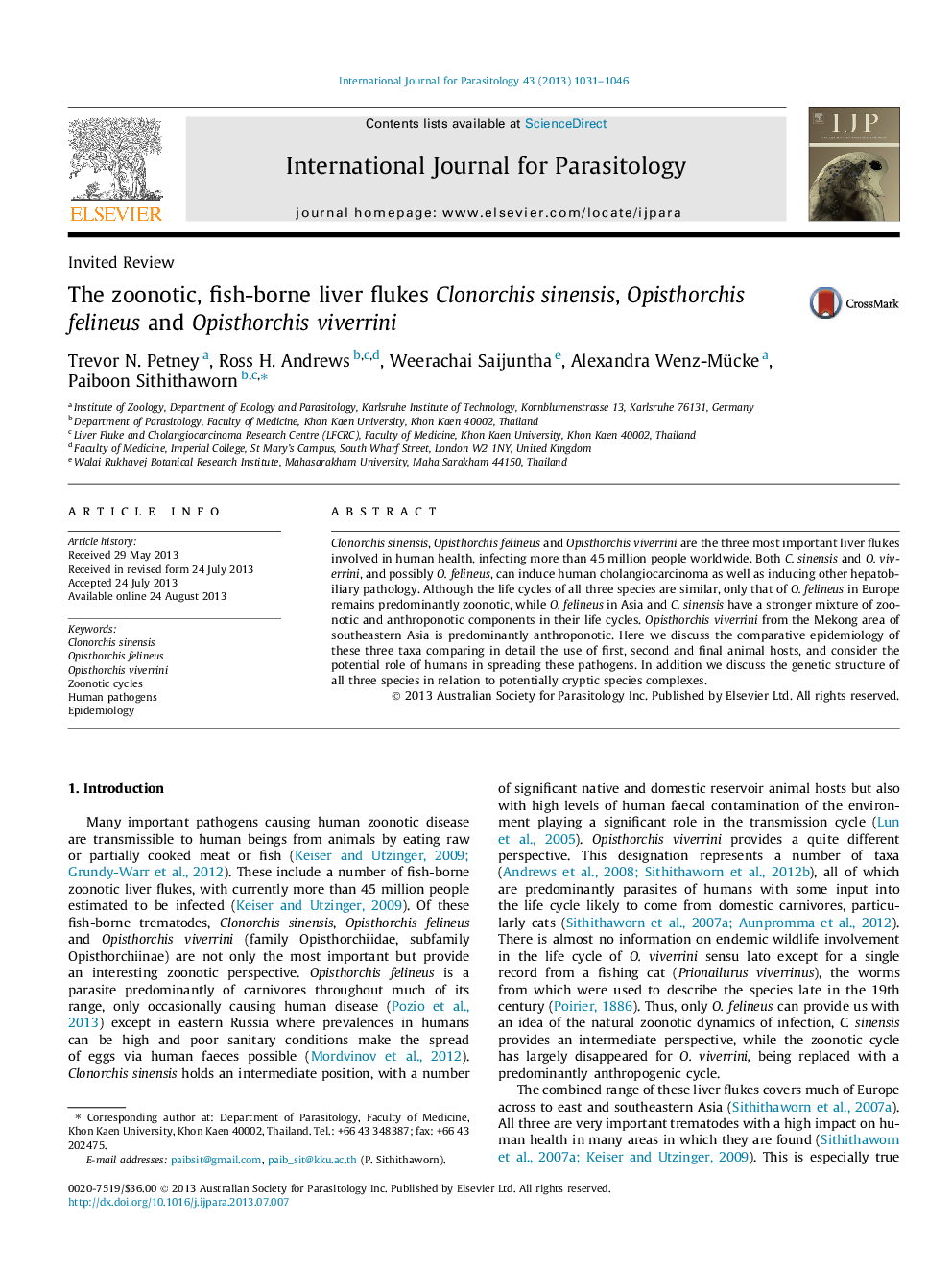| Article ID | Journal | Published Year | Pages | File Type |
|---|---|---|---|---|
| 2436005 | International Journal for Parasitology | 2013 | 16 Pages |
•The three most important liver flukes infect more than 45 million people worldwide.•At least two of these species induce cholangiocarcinoma.•All three species have similar life cycles; however the zoonotic component of these life cycles differs between species.•Evidence for cryptic species is found within Opisthorchis viverrini.
Clonorchis sinensis, Opisthorchis felineus and Opisthorchis viverrini are the three most important liver flukes involved in human health, infecting more than 45 million people worldwide. Both C. sinensis and O. viverrini, and possibly O. felineus, can induce human cholangiocarcinoma as well as inducing other hepatobiliary pathology. Although the life cycles of all three species are similar, only that of O. felineus in Europe remains predominantly zoonotic, while O. felineus in Asia and C. sinensis have a stronger mixture of zoonotic and anthroponotic components in their life cycles. Opisthorchis viverrini from the Mekong area of southeastern Asia is predominantly anthroponotic. Here we discuss the comparative epidemiology of these three taxa comparing in detail the use of first, second and final animal hosts, and consider the potential role of humans in spreading these pathogens. In addition we discuss the genetic structure of all three species in relation to potentially cryptic species complexes.
Graphical abstractA generalized life cycle for zoonotic opithorchiid liver flukes.Figure optionsDownload full-size imageDownload high-quality image (61 K)Download as PowerPoint slide
